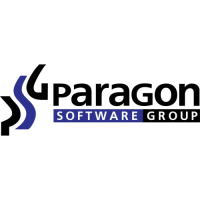
Do you have a question about the Paragon Glass Kiln and is the answer not in the manual?
Covers overfiring, ceramic fiber care, manual reading, and food/drink surface considerations.
Details proper electrical connections and circuit requirements for kiln operation.
Guidance on selecting a suitable location, clearance, and surface for the kiln.
Instructions on how to safely move the kiln for seminars or vacations.
Description of essential accessories like shelves, posts, separator, and safety glasses.
Information on the embedded heating element, clicking sounds, and thermocouple checks.
Procedures for vacuuming the kiln, removing hot ware, and maintaining a firing log.
Warnings about kiln contamination and the impact of silver residue on glass.
Guidance on placing ware on shelves, using separator, and preparing shelves for firing.
Instructions for using ceramic posts to support fireclay shelves.
Procedures for drying, loading, and supporting silver clay pieces.
Guidance on setting firing rates, temperatures, and hold times for silver clay.
Instructions for cooling silver clay pieces and firing with other materials.
Basic tools and techniques for cutting and preparing glass for fusing.
How to test different glass types for compatibility and results of the test.
Explanation of the annealing range and its importance for preventing glass breakage.
Steps for cleaning glass and using glue for assembly before firing.
Detailed steps for loading the kiln and firing glass, including venting.
How to prepare and clean copper surfaces for enameling.
Techniques for counter enameling and removing fire scale.
Describes sifting and spatula methods for applying enamel powders.
Recommended temperature and hold time for firing enamels.
Using pyrometric cones and loading/firing overglaze decorations.
Detailed steps for lost wax burnout, including wax elimination and mold hardening.
A sample program for achieving the correct burnout temperatures and holds.
Addresses common problems with silver clay like cracks, brittleness, and shrinkage.
Common causes and solutions for glass cracking during firing.
Troubleshooting glass bubbles and devitrification (frosty surface).
Problems with overglaze, gold, china paint, and luster application.
Diagnosing issues like blank display, circuit breaker trips, and inaccurate temperatures.
Guides for adjusting door latches, repairing ceramic fiber, and cleaning view ports.
Instructions for removing and installing a new temperature controller unit.
Information on when and how the firing chamber (element) may need replacement.